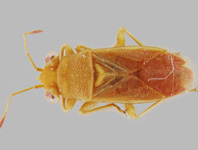Abstract
A new species of Rhabditidae, collected from manure, is described and illustrated. Cephaloboides anisospiculus sp. n., an amphimictic species with a 1:1 sex ratio, is characterized by a small to medium-sized body (female: L = 0.5–0.7 mm, a = 13.6–20.0, b = 2.7–3.6, c = 15.4–22.7, c’ = 1.0–1.8, V = 51.2–60.9), finely striated, punctated cuticle; slightly raised labial papillae; stoma with slightly anisomorphic metastegostom; presence of epiptygma; eggs measuring 37–42 x 20–24 µm; slightly protruded vulval lips with cuticular flaps; rectum 16–19 µm long; males with small, stout, slightly arcuate spicules with hood-like capitula and genital papillae in 1/2/(1+3)+2+P configuration; bursa leptoderan, greatly reduced and not enveloping the caudal spike. C. curvicaudatus (Schneider, 1866) Zullini, 1982 is also redescribed, with an emended diagnosis. The present population of C. curvicaudatus shows a few minor differences viz., relatively smaller ‘b’ value, presence of elongate capitula of spicules and strong copulatory muscle bands. Another species, C. parapapillosus (Schuurmans Stekhoven, 1951) comb. n. has been reinstated.
References
Andrássy, I. (1983) A taxonomic review of the suborder Rhabditina (Nematoda: Secernentea). Orstom, Paris, 241 pp.
Andrássy, I. (2005) Free-living nematodes of Hungary (Nematoda errantia). Pedozoologica Hungarica. No. 3. Hungarian Natural History Museum, Budapest, 518 pp.
Baermann, G. (1917) Eine einfache Methode zur Auffindung von Ankylostomum (Nematoden) Larven in Erdproben. Geneeskunding Tijdschrift voor Nederlandsch-Indië, 57, 131–137.
Claus, C.F.W. (1862) Über einige im Humus lebende Anguillulinen. Zeitschrift für wissenschaftliche Zoologie, 12, 354–359.
Cobb, N.A. (1918) Estimating the nema population of the soil. U.S. Department of Agriculture. Agricultural Technical Circular of US Department of Agriculture, 1, 1–48.
Ditlevsen, H. (1971) Land and freshwater nematodes. In: Spärck, R. & Tuxen, S.L. (Eds.), Zoology of the Faroes, 1971, pp. 1–28.
Dougherty, E.C. (1953) The genera of the subfamily Rhabditinae Micoletzky, 1922 (Nematoda). Thaper Commemoration, 1953, 69–76.
Dougherty, E.C. (1955) The genera and species of the subfamily Rhabditinae Micoletzky, 1922 (Nematoda): a nomenclatorial analysis–including an addendum on the composition of the family Rhabditidae Örley, 1880. Journal of Helminthology, 29, 105–152.
Dujardin, F. (1844) Histoire naturelle des helminthes ou vers intestinaux. Librairie Encyclopedique de Roret, Paris, 654 pp.
Fuchs, G. (1931) Einige neue Rhabditis–Arten. Zoologische Jahrbücher (Systematik), 62, 119–148.
Goodey, T. (1929) On some new and little-known free-living nematodes. Journal of Helminthology, 7, 27–62.
https://doi.org/10.1017/S0022149X0001871XGoodey, T. (1943) On Rhabditis curvicaudata (Schneider) and R. paraciliata n. sp. Journal of Helminthology, 21, 10–17.
https://doi.org/10.1017/S0022149X00031837Hofmänner, B. (1913) Contribution à l’etude des nematodes libres du Lac Léman. Revue Suisse de Zoologie, 21, 589–658.
https://doi.org/10.5962/bhl.part.82534Khan, E., Singh, M. & Baird, S. (1999) Studies on the rhabditids of India: Descriptions of Flagicaudoides gen. n. and two new species of Cuticularia (Nematoda: Rhabditida). International Journal of Nematology, 9, 196–202.
Kiontke, K. (1999a) The Rhabditis (Rhabditella) octopleura species complex and descriptions of three new species. Russian Journal of Nematology, 7, 71–94.
Kiontke, K. (1999b) The nematode fauna of rotting cactus and phasmids in male Secernentea. Ph.D. Dissertation, Free University, Berlin, 264 pp.
Örley, L. (1880) Az Anguillulidák magánrajza. Természetrajzi Füzetek (Budapest), 4, 16–150. [in Hungarian]
Osche, G. (1952) Systematik und Phylogenie der Gattung Rhabditis (Nematoda). Zoologische Jahrbücher (Systematik), 81, 190–280.
Rahm, G. (1928) Alguns nematodes parasitas e semi-parasitas das plantas culturaes do Brasil. Archivos do Instituto Biologico de Defesa Agricola e Animal (Saõ Paulo), 1, 239–251.
Rahm, G. (1929) Nematodes parasitas e semi-parasitas de diversas plantas culturaes do Brasil. Archivos do Instituto Biologico de Defesa Agricola e Animal (Saõ Paulo), 2, 67–136.
Schneider, A.F. (1866) Monographie der Nematoden. Georg Reimer, Berlin, 357 pp.
Schneider, W. (1923) Niederrheinische freilebende Nematoden. Zoologischer Anzeiger, 56, 264–281.
Schuurmans Stekhoven, J.H. (1951) Nématodes saprozoaires et libres du Congo Belge. Mémoires de l'Institut Royale des Sciences Naturelles de Belgique, Série 2, 39, 3–79.
Seinhorst, W. (1959) A rapid method for the transfer of nematodes from fixative to anhydrous glycerin. Nematologica, 4, 67–69.
https://doi.org/10.1163/187529259X00381Skrjabin, K.I., Shikhobalova, N.P., Sobolev, A., Paramonov, A.A. & Sudarikov, V.E. (1954) Camallanata, Rhabditata, Tylenchata, Trichocephalata and Dioctophymata and the distribution of parasitic nematodes by their hosts. Izdatelstvo Akademii Nauk SSSR (Moskva), 4, 1–927.
Stefański, W. (1916) Die freilebenden Nematoden des Inn, ihre Verbreitung und Systematik. Zoologischer Anzeiger, 46, 363–385.
Sudhaus, W. (1976) Vergleichende Untersuchungen zur Phylogenie, Systematik, Ökologie, Biologie und Ethologie der Rhabditidae (Nematoda). Zoologica, 43, 1–229.
Sudhaus, W. (1977) Rhabditis dimorpha: Ein Beispiel für unvollständige Häutung und Sexualdimorphismus bei Nematoden. Zoologischer Anzeiger, 199, 325–352.
Sudhaus, W. (2011) Phylogenetic systematisation and catalogue of paraphyletic “Rhabditidae” (Secernentea, Nematoda). Journal of Nematode Morphology and Systematics, 14, 113–178.
Sudhaus, W. & Fitch, D. (2001) Comparative studies on the phylogeny and systematics of the Rhabditidae (Nematoda). Journal of Nematology, 33, 1–70.
Timm, R.W. (1959) Cheilorhabditis and Odontorhabditis, two new genera of soil nematodes allied to Rhabditis. Nematologica, 4, 198–204.
https://doi.org/10.1163/187529259X00219Zullini, A. (1982) Nematodi (Nematoda) Guide per il riconoscimento delle specie animali delle acque interne Italiane, 17, 1–117.

